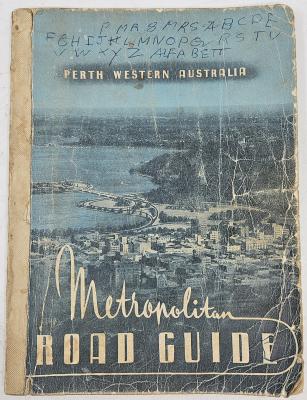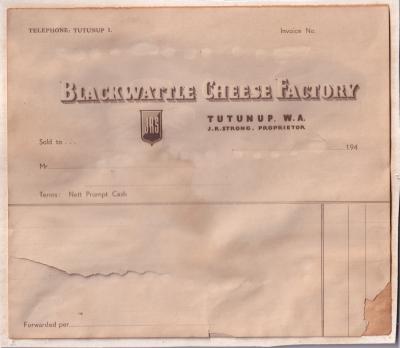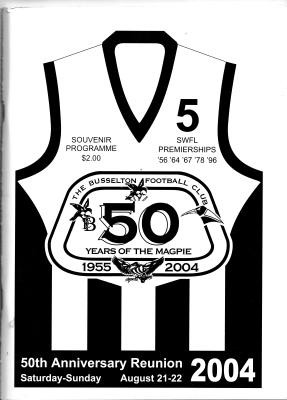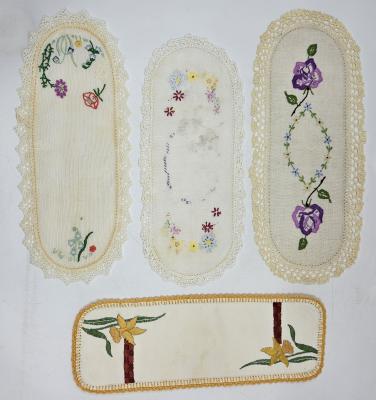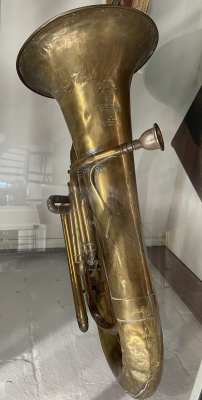Bagpipes - Lawrie
c. 1930Set of Bagpipes with one chanter, five drones and a tartan bag that are stored in their original wooden Lawrie case. The chanter and drones are made of ebony with ivory projecting mounts and caps and tapered nickel ferrules. The case has a decorative brass handle and corner plating.
The earliest known archaeological find positively identified as a part of a bagpipe is a chanter found in 1985 at Rostock, Germany, that was dated between 1380 and 1425. The earliest written account of the use of the Scottish Highland bagpipes is George Buchanan (1506–82) claiming that the bagpipes had replaced the trumpet at the Battle of Pinkie in 1547. The 16th century was when most of the great music for the bagpipes was created. Most of this music reflected its military origins and ranged from battle tunes, marches, gatherings, salutes and laments. As modern music became more sophisticated, there was no real place for the bagpipe with its limited range and function and nowadays they are better known as a part of the Scottish traditional heritage.
RG Lawrie Ltd. was founded in 1881 by wood and ivory turner Robert George Lawrie who had made his name with mass producing quality bowling green balls. The business was located in John St, Glascow and initially produced bowling green bowls and bagpipes but by 1883 had expanded to employing over 20 people and making highland dress. Much of this was driven by demand from the army. RG Lawrie Ltd. was favoured by British royalty and Robert Lawrie himself supplied bagpipes to Queen Victoria who then gave them to her son who became Edward VII. Other royal customers included King George V and Edward VIII. In 1931, the company received a Royal Warrant of Appointment to King George V and in 1957 another Royal Warrant from Queen Elizabeth II. By 1977, there were seven RG Lawrie retail shops in Scotland.
Details
Details
The wooden case has 3 cardboard labels with the following wordings:
R.G. LAWRIE, Ltd. THE HIGHLAND HOUSE
38 RENFIELD ST.
GLASGOW
Works-
N. WALLACE ST.
GLASGOW
Another states
"LAWRIE'S PIPE CHANTER IS EXCELLENT ICAN HEARTILY RECOMNEND IT."
(Sgd.) WM. ROSS, Pipe-major
EDINGBURGH CASTLE Late SCOTS GUARDS
Another states
MAKERS OF BAGPIPES AND KILTS
Bagpipes consist of an air supply, a bag, a chanter, and usually at least one drone. The chanter is the melody pipe, played with two hands. The drone is a pipe that generally is not fingered but rather plays a constant harmonizing note throughout play (usually the tonic note of the chanter). Many bagpipes have more than one drone (and, sometimes, more than one chanter) in various combinations, held in place in stocks—sockets that fasten the various pipes to the bag. Of all vintage pipes in demand today, low-end ebony Lawries with ivory (or celluloid) projecting mounts and caps, and tapered nickel ferrules are the most common. The company produced a huge number of affordable pipes during its prime, and most are tonally superb.
This set of bagpipes was owned by Busselton resident Robert (Skipper) Forsyth who used to play them at local dances during WW2. Skipper Forsyth was active in the Busselton Sea Scouts and even built a boat for use by the Sea Scouts.
38 Renfield St
Other items from Busselton Historical Society
- Metropolitan Road Guide - Perth Western Australia (1959)
- Invoice - Blackwattle Cheese Factory
- Recipe Book - "Save The Jetty Recipes"
- Souvenir Programme - Busselton Football Club 50th Anniversary Reunion 2004
- Walter & Joan Yates - ephemera
- Hand Embroidered Doilies by Dorothy Simpson (nee Wells)
- Euphonium
- Monarch Solo Button Accordion
- Concertina
- Hohner Double Ray Delux Button Accordion
- Zither
- Violin
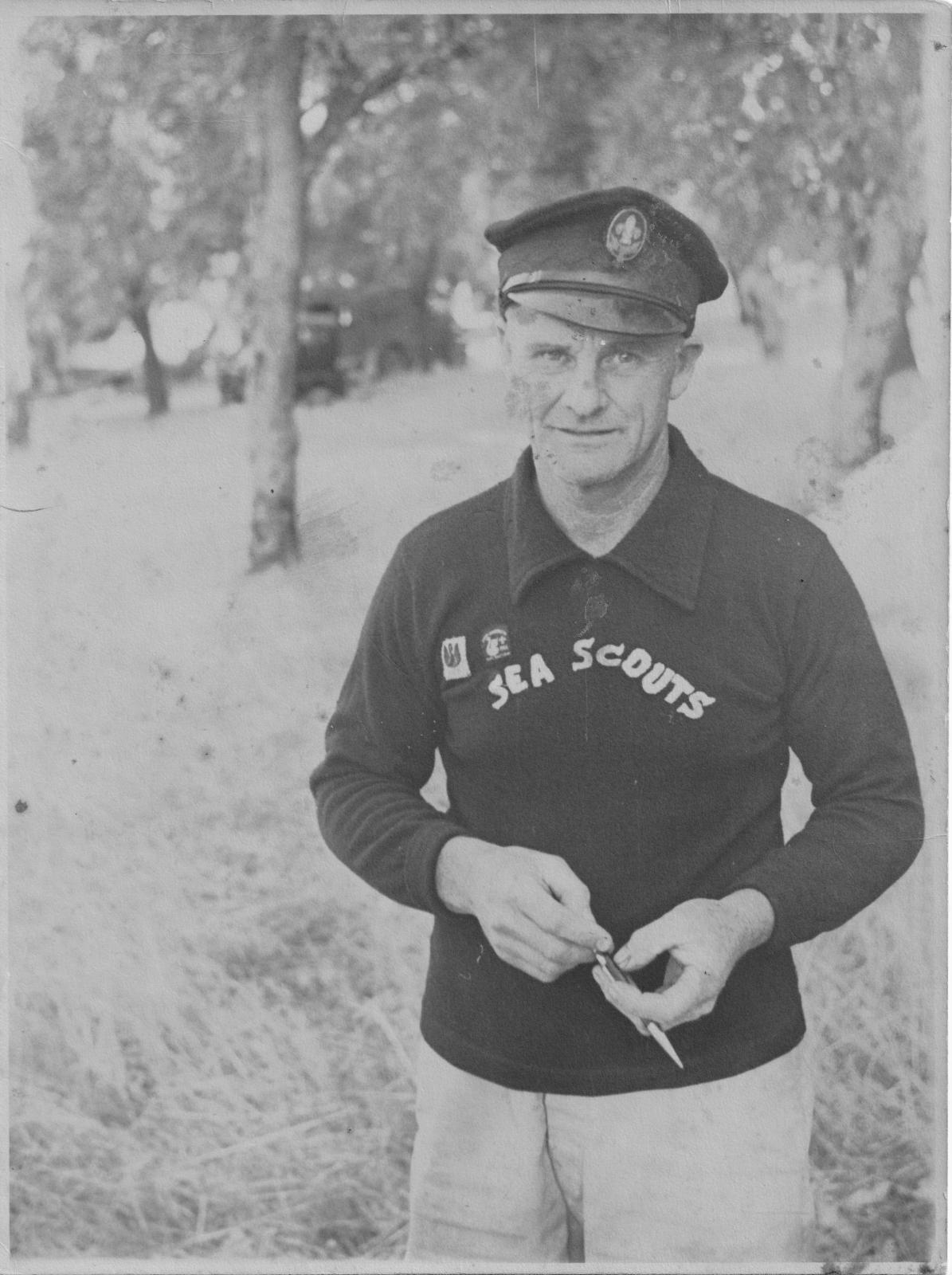
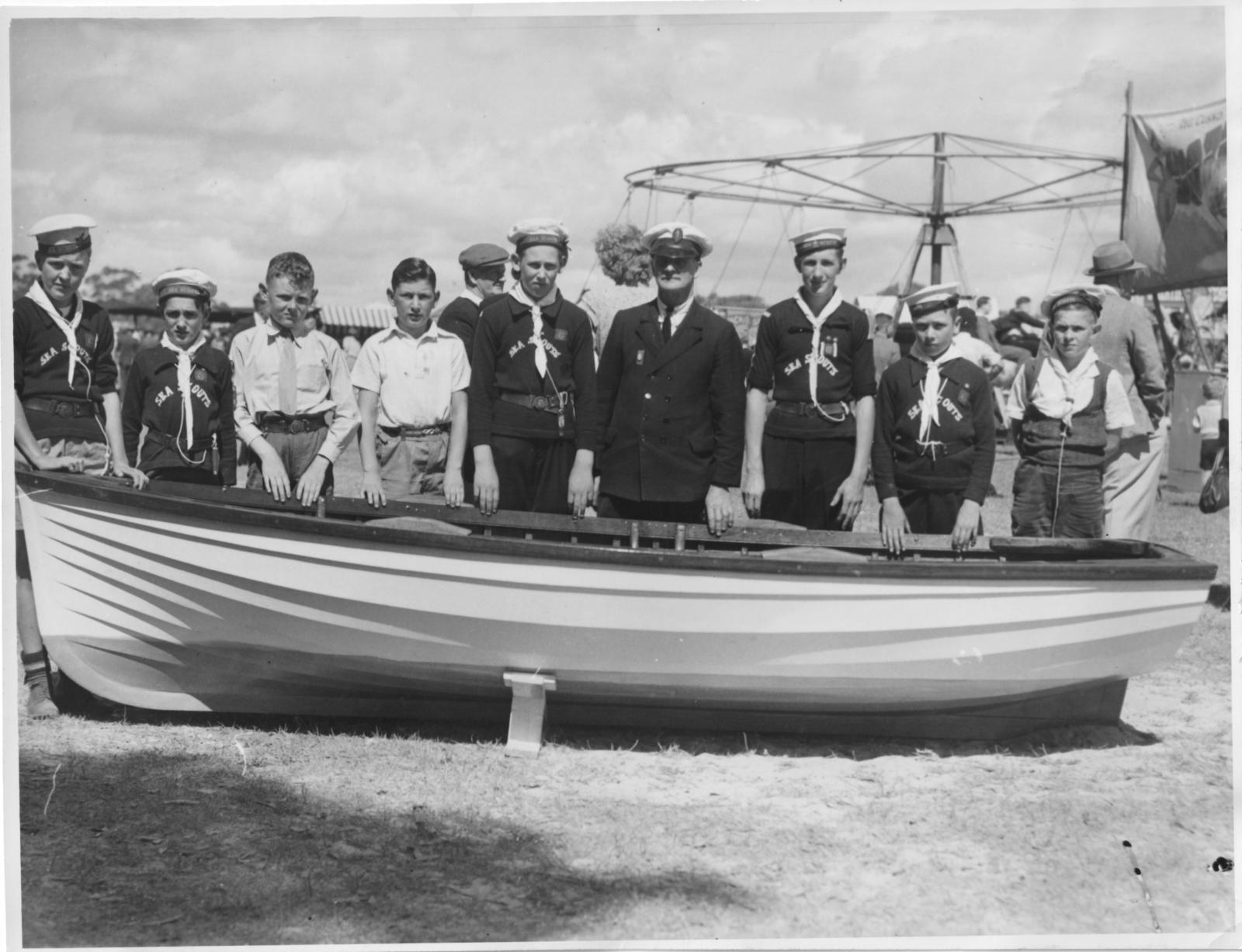
Scan this QR code to open this page on your phone ->

